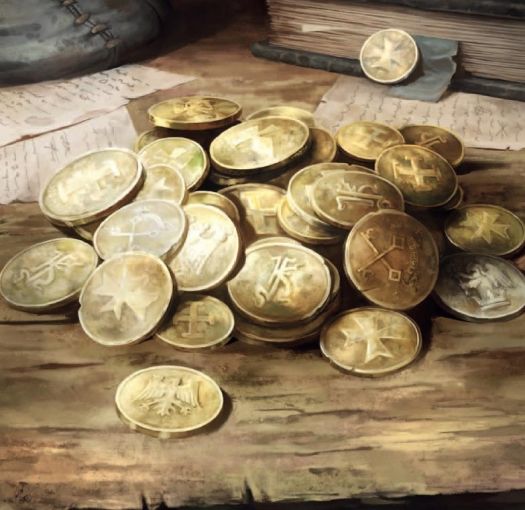Difference between revisions of "Coin (monetary unit)"
From The Authentic D&D Wiki
Jump to navigationJump to searchTao alexis (talk | contribs) |
Tao alexis (talk | contribs) |
||
| Line 1: | Line 1: | ||
[[File:Coin (monetary unit).jpg|right|525px|thumb]] | [[File:Coin (monetary unit).jpg|right|525px|thumb]] | ||
| − | '''Coins''' are small, flat pieces of metal | + | '''Coins''' are small, flat pieces of metal, minted with images, numerals and text. Standardized in weight, materials and value, they are issues by numerous monarchs and republics. The study of coins is [[Numismatics (sage ability)|numismatics]]. |
| + | |||
| + | For game playability, by will of the gods, every coin of each type — [[Gold (metal)|gold]], [[Silver (metal)|silver]] or [[Copper (metal)|copper]] — has the same dimensions and value, though they may have different images on the actual coin. While anachronistic, attempts in the past to create individualised coinage, with multiple values that must be exchanged when moving from one kingdom to the next, proved possible but offered no meaningful contribution to the game's play. After testing this variable system for two years, with no appreciable results, the current system was adopted. | ||
| + | |||
| + | == Values == | ||
Revision as of 02:00, 21 December 2021
Coins are small, flat pieces of metal, minted with images, numerals and text. Standardized in weight, materials and value, they are issues by numerous monarchs and republics. The study of coins is numismatics.
For game playability, by will of the gods, every coin of each type — gold, silver or copper — has the same dimensions and value, though they may have different images on the actual coin. While anachronistic, attempts in the past to create individualised coinage, with multiple values that must be exchanged when moving from one kingdom to the next, proved possible but offered no meaningful contribution to the game's play. After testing this variable system for two years, with no appreciable results, the current system was adopted.
